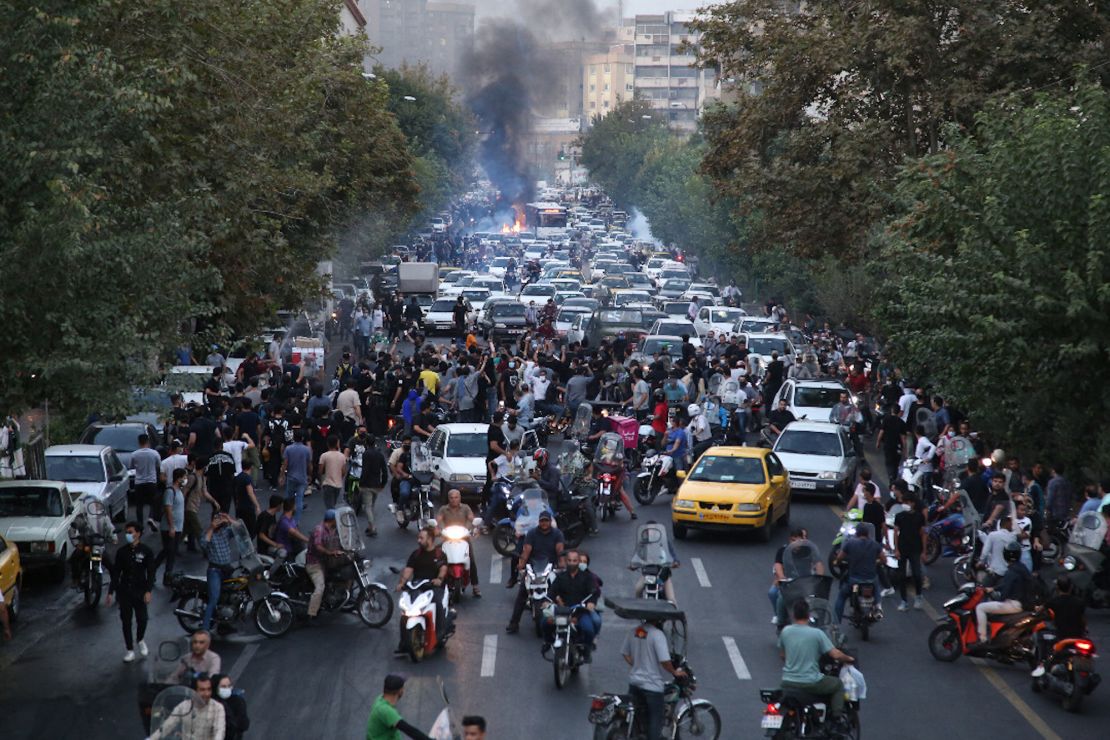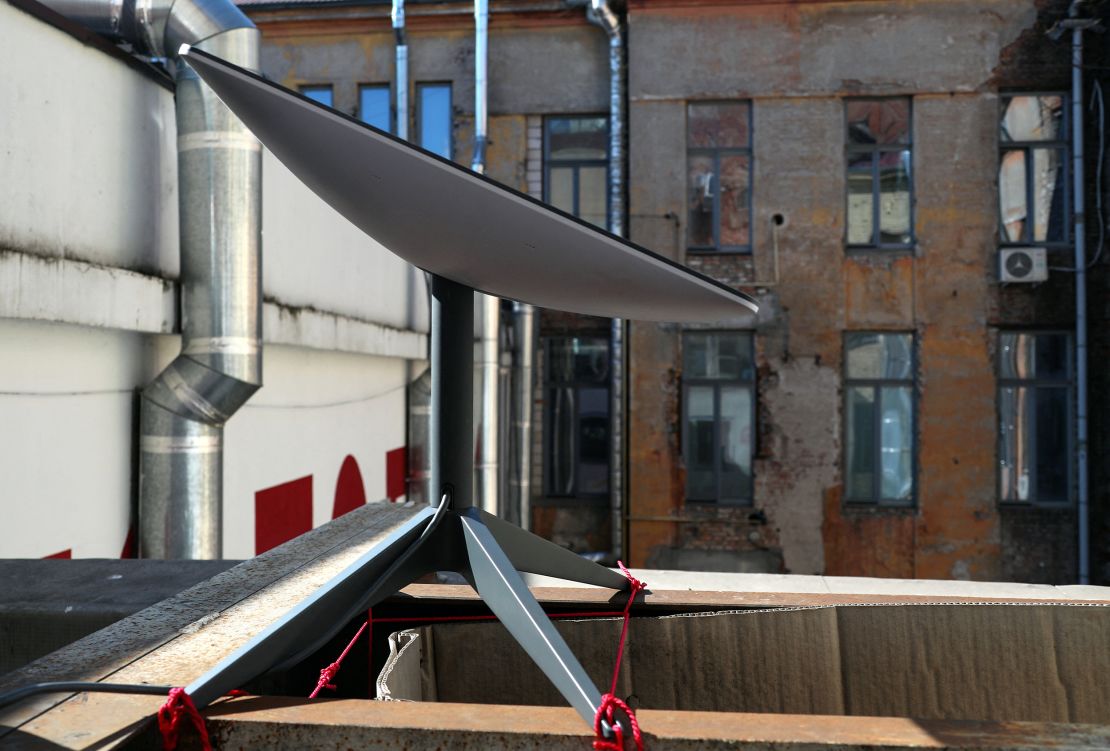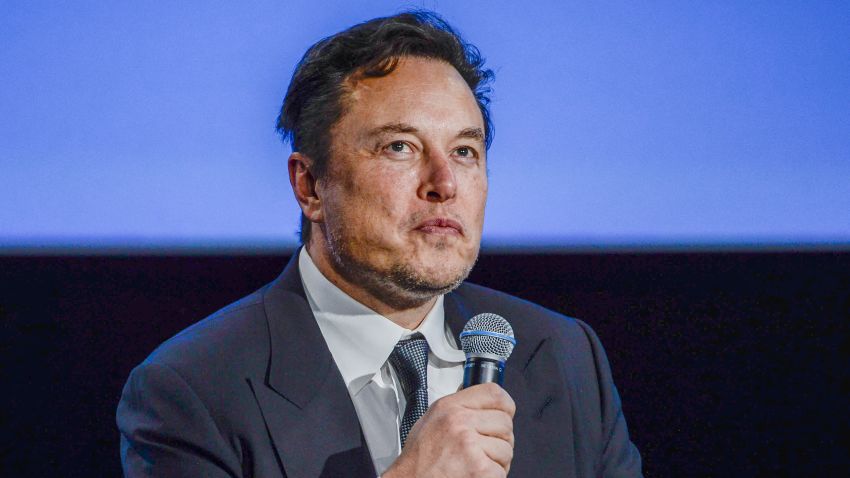The White House has engaged in talks with Elon Musk about the possibility of setting up SpaceX’s satellite internet service Starlink inside Iran, multiple officials familiar with the discussions told CNN.
The conversations, which have not been previously reported, come as the Biden administration searches for ways to support the Iranian protest movement that exploded just over a month ago after 22-year-old Mahsa Amini died under suspicious circumstances after being detained by the country’s morality police.
The White House sees Starlink’s compact, easy-to-use technology as a potential solution to the Iranian regime’s aggressive efforts to restrict activists’ internet access and communications.
“We have our foot on the gas to do everything we possibly can to support the aspirations of the Iranian people,” a senior administration official told CNN. “That is our policy, period. At the same time, it is truly an Iranian movement led by young girls and spreading to other aspects of society. And we do not want to in any way eclipse their movement.”
If a plan is enacted, it would be the second major theater this year — along with Ukraine — where the US government has turned to Starlink to help provide crucial telecommunication services, even as questions swirl around Musk’s reliability in his dealings with the US government.
“He’s a loose cannon we can never predict,” said a senior US defense official familiar with the government’s discussions with Musk and SpaceX about Ukraine.

Concerns over Musk’s unpredictable tendencies intensified after CNN first reported last week that Musk’s company, SpaceX, had been quietly asking the Pentagon to pay tens of millions of dollars per month to fund Starlink in Ukraine and take the burden off SpaceX. In response to that reporting, Musk then abruptly announced on Twitter that he had withdrawn the funding request.
The Pentagon has said this week that talks with SpaceX about Ukraine are ongoing, after documents obtained by CNN showed SpaceX warning the Pentagon last month it could no longer fund or service Starlink in Ukraine “for an indefinite period of time.”
SpaceX claims that providing Starlink services in Ukraine have cost it $80 million so far and that by the end of the year costs will exceed $100 million. SpaceX did not respond to CNN’s request for comment.
A solution or a risk for Iranian activists?
The needs of Iranian protesters and Ukrainian soldiers, and how they would use Starlink, are wildly different. And experts warn that while Starlink in Ukraine has been critical to battlefield successes, getting Starlink into Iran would be a much bigger and potentially more dangerous challenge.

The situation with Starlink and Ukraine does not seem to have deterred the White House from pursuing Starlink, which uses satellites to beam internet service to compact terminals on the ground. SpaceX has around 3,000 such satellites currently in orbit and roughly 20,000 terminals on the ground in Ukraine.
President Joe Biden has wanted to be more bullish and openly supportive of the Iranian protesters than his former boss, President Barack Obama, who opted to largely stay out of an Iranian protest movement that erupted in 2009. Biden said in a statement on October 3 that his administration “stands with Iranian women and all the citizens of Iran who are inspiring the world with their bravery” and is trying to make it easier for Iranians to access the internet.
“We are interested in finding ways to ensure that the Iranian people can have access to the internet on their phones and everywhere else,” said the senior administration official. “And so Starlink is one option, but it is not the only option.”
It is not clear whether the administration has offered to pay for the Starlink terminals to be set up in Iran. In its letter to the Pentagon in September, SpaceX said it could no longer donate Starlink terminals to Ukraine or pay for its ongoing service and requested that the Pentagon take over funding for Ukraine’s government and military use of Starlink, which SpaceX claims would cost more than $120 million for the rest of the year and could cost close to $400 million for the next 12 months.
Some US officials hope that Starlink’s on-the-ground terminals will one day become as prevalent in Iran as satellite TV dishes. That technology is also technically outlawed by the regime, but is nevertheless abundant across the country, the sources noted. Currently, there are “very few” Starlink terminals already operating in Iran, Musk said in a tweet last week.
But there are several glaring issues with that plan. Chief among them is that Starlink’s satellites require physical terminals on the ground to connect to, and their signals could be easy to detect. Smuggling the units across the border into Iran is just the first challenge, before they would then hypothetically be used by undisciplined protesters under the harsh gaze of Iran’s security services.
“I’m really concerned that there is a lack of knowledge about the security or even training how people can hide those signals,” said Amir Rashidi, the director of internet security and digital rights at Miaan Group, who was forced to flee Iran after the 2009 protests. “It’s going to be really risky for people in Iran to use it in a massive scale.”
Rashidi said more instruction materials are needed, in Farsi, to help protesters understand how to better cover their tracks and use equipment safely. He argues more investment is needed on circumvention tools and work by the UN’s International Telecommunication Union.
US-backed efforts, he said, carry significant risk.
“As soon as we get arrested, the first charge is you’re a spy, you’re working for CIA, you’re working for a British intelligence service,” he said. “If the US government is involved in distribution then that would be another crime in the eyes of the Iranian Government and people might be charged with it, really difficult and hard charges.”
‘Why haven’t we figured this out sooner?’
While support for protesters’ means of communication is an area where the administration feels it can take concrete action, a criticism of the administration is that it’s only being seriously addressed now.
“Why haven’t we figured this out sooner?” one person involved in the discussions told CNN. “We’re putting so much effort into the JCPOA [nuclear deal]. It’s an ongoing national security interest to get rid of this regime. Here’s how: empower those democrats on the ground in Iran and the number one way to do it is to find ways to support tech like that in the country, and we haven’t, we’ve failed.”
The senior administration official told CNN that right now, the JCPOA is “not on the agenda.” National Security Council coordinator for strategic communications John Kirby echoed that on Thursday, telling reporters that “we are way far apart with the Iranians in terms of a return to the deal.”
“What we are focused on is making sure we are holding the regime accountable for the way they are treating protesters in the country,” he said.
The White House, government technologists and Musk and his team are still working, though, to address the biggest challenges with Starlink and other communications technologies, officials said.
“When it comes to more active USG involvement, without getting into specific technologies, we’re always considering whether a technology would put those who use it at risk of being identified and harmed by their government in some way,” the senior administration official said. “All elements of the Biden administration are in lockstep on that.”
The official also touted the benefits of a policy change the Biden administration made last month in an effort to expand internet services to Iranians. The license issued by the Treasury Department would give US technology companies greater freedom to operate in highly-sanctioned Iran.
“The beauty of General License D-2 is that it allows private companies to decide for themselves what products and services to offer inside Iran,” the official said.
Musk’s unpredictability over Ukraine raises concern
Musk has said that if the terminals can get into Iran, SpaceX has already activated the signal. But the way he has acted in the discussions around Ukraine have only added to concerns about the considerable influence the world’s richest man may now have over some of the world’s biggest conflicts.

Last weekend, Musk tweeted: “To hell with it…even though Starlink is still losing money & other companies are getting billions of taxpayer $, we’ll just keep funding the Ukraine govt for free,” he wrote on Saturday. Then on Monday he unequivocally stated: “SpaceX has already withdrawn its request for funding.”
Earlier this week, Pentagon Press Secretary Brig. Gen. Pat Ryder told reporters that the department “does continue to discuss various matters with SpaceX, to include Starlink,” adding that the Pentagon had not yet paid anything for Starlink.
At the same time, there have been numerous reports of Starlink outages along the frontline as Ukraine has pushed into Russian-occupied areas. A person familiar with the discussions with SpaceX told CNN that Ukraine had to proactively make a request for service to be turned on when an area is taken back.
On Thursday, Ukraine’s defense minister Oleksiy Reznikov expressed confidence that funding for Starlink would continue, telling Politico: “I know we that we will not have a problem.” If the funding doesn’t come from SpaceX, he said, he expects the Pentagon, Europe and private donors to step up.
Musk has pointed to Ukrainian officials’ public praise of SpaceX and Starlink—one senior Ukrainian official, Mykhailo Fedorov, called Musk “among the world’s top private donors supporting Ukraine”—as evidence that he is not trying to undermine the Ukrainians’ fight.
When someone tweeted on Tuesday that Musk is “trying to bring both sides of the conflict to the same level as possible, so as to avoid a one-sided situation,” calling it “Peace at the least cost,” Musk responded: “Exactly.”
Still, there remain concerns about how dependent Ukraine is on Starlink.
“Ukraine needs Musk’s technology, but they don’t know if he will continue to support them,” a person familiar with the discussions between Ukraine and SpaceX said.
John Scott-Railton, a researcher and expert on connectivity in conflicts, called the success of Starlink in Ukraine “great marketing,” but the question of how to ultimately support Iran’s protesters’ means of communication “is a huge challenge, and it’s a lot harder to see how it could be addressed by Starlink devices.”
“Efforts to help should be grounded in understanding how Iranians communicate, the risks they face, and the censorship-circumvention technologies they have experience using. We should be engaged, but wary of silver bullet ideas.”


















